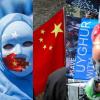Foiling Extremism: India's Fight Against Al Qaeda in Indian Subcontinent's Silent Infiltration
The recent dismantling of Al Qaeda in the Indian Subcontinent (AQIS) modules across India has revealed a meticulously crafted strategy aimed at embedding extremist networks within the country. With a focus on decentralized operations, targeted recruitment, and grassroots radicalization exploiting local vulnerabilities, AQIS seeks to establish its Pan-India terror networks, mostly in remote places, to destabilize the country while advancing its violent jihadist ideology.


